JON CRUDDAS MP recalls the life of former Labour leader and east London ILPer George Lansbury, arguing that his life, work and principles crystallise the journey of political rediscovery underway in Ed Miliband’s ‘one nation’ Labour Party.
George Lansbury is one of the great heroes of the Labour Party. He was to quote the great historian AJP Taylor, “the most loveable figure in British politics”, one of the most extraordinary people ever to join our party.
I think we are beginning to rediscover Lansbury. I have to admit that ‘good old George’ is a personal hero of mine so I am very keen on the process of rehabilitation underway, albeit one that is far from complete.
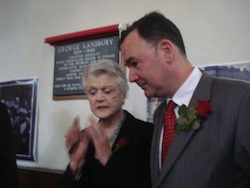 The last time I said a few words about the great man was on the 7 May 2011. We were dedicating a plaque to him on the Bow Road, to mark the 700th anniversary of Bow Church where he worshipped in for 40 years, and where, in 1940, his funeral cortege arrived five years after he had stood down as the Labour leader on a matter of utmost principle.
The last time I said a few words about the great man was on the 7 May 2011. We were dedicating a plaque to him on the Bow Road, to mark the 700th anniversary of Bow Church where he worshipped in for 40 years, and where, in 1940, his funeral cortege arrived five years after he had stood down as the Labour leader on a matter of utmost principle.
It was a magnificent, ILP and Christian socialist event. Hundreds were there: 80 of the Lansbury family, his biographer John Shepherd, his granddaughter Angela Lansbury, and Lord (Peter) Hennessy. It was part of the Lansbury rehabilitation, and we need many more such events.
I want to be pretty blunt though. When we talk about rediscovering Lansbury really we are talking about something else; we are speaking in code if you like. It is really about rediscovering exiled traditions within Labour, of returning to issues of ethics within the Labour Party, about lost utopian movements that want to challenge capitalism and change the world. It is really about what we could be again as a party – about rebuilding hope, energy and vitality through returning to issues of principle and character.
This form of socialism is romantic, not scientific; it is humane and warm; passionate and humble. It is about rediscovering a political sentiment, a soul.
So a journey of political rediscovery is underway crystallised in the life, the work and principles of our man: George Lansbury.
Three key east London figures
The east end of London is fundamental to the history of Labour. Three of our most important people were here; their characters forged here. All are intertwined, the key ingredient being their membership of the ILP in the first dozen years of the last century.
First there is the Clement Attlee of Haileybury House and Toynbee Hall, the youngest ever mayor of Stepney, local MP, leader of the party and then the country. Attlee was arguably the greatest prime minister this country ever had, yet his greatest act for Labour, and for our country, occurred when not prime minister. It was in May 1940, in the very month Lansbury died, when Attlee and Arthur Greenwood entered the wartime government in support of Churchill to resist widespread Conservative calls for a negotiated piece with Hitler.
Attlee was not the greatest Labour leader of the opposition, however; for me, that was Lansbury, leader after 1932. He is the second key Labour figure from the east end.
In order to have a third Labour government in 1945, or the governments of Wilson and Callaghan in the 1960s and 1970s, or the Blair and Brown governments of more recent years, there had to be a party for them to inherit and lead, indeed from which to govern. This is what Lansbury delivered through his essential decency, through being ‘good old George’. He kept us alive.
This is part of Lansbury’s legacy. To quote George Thomas: “He not only saved the soul of the party, he saved the party. We could have sunk into oblivion and the Liberals could have been reborn.” It was the character of the man that saved the party in its darkest moments, and we should never forget this.
Yet neither of these two was the most important individual member of the Labour movement. That was the third key figure from around here, someone you have never heard of – an east London wharf keeper called Tommy Williams, a “fiery young Welshman” who, through his passionate anger at the inhumanity of the workhouse, convinced the young Attlee to join with 15 others to form the Stepney branch of the ILP in January 1908, five years after Lansbury had joined the ILP.
It was the ILP fire in Williams that turned Attlee away from the Fabians and toward a more radical politics. Attlee wonderfully described this: “Williams proclaimed his socialist faith and I, listening, said, ‘I am a socialist too’.”
The parallels and differences between Attlee and Lansbury are fascinating.
In 1919 Major Attlee became the youngest ever mayor of Stepney. In this role he supported Lansbury and the Poplar Rates Rebellion of 1921. He was elected MP for Limehouse in 1922 at the same election which saw Lansbury get back into parliament here in Bow following his 1912 resignation a decade before.
In 1934 Attlee became acting leader for nine months when Lansbury fell and nearly died. Later Attlee defeated Greenwood and Herbert Morrison for the leadership when taking over from Lansbury.
But for me it is the ILP link that is the key, the form of socialism it stood for.
Founded in Bradford in 1893 the ILP grew from the bottom up, “from those shadowy parts known as the provinces”, to quote EP Thompson. Its image was one of bohemianism: “braving apathy and hostility, buoyed up by optimism, concerned not with the minutiae of political dealings but the broad uncomplicated advocacy of ethical principles”.
In many ways, 1895 was the critical year for the ILP. Under Keir Hardie it turned away from the doctrinaire economism of the Social Democratic Federation (SDF) and created a unique blend of domestic socialism. This was encapsulated in the Labour Church and Socialist Sunday School movements with their alternative commandments, which sought “the realisation of heaven in this life by the establishment of a society founded on justice and love to thy neighbour”, and to “honour the good, be courteous to all, bow down to none”.
Its politics were ethical, not materialistic; they were romantic and utopian, built around the dignity of the human being and our fundamental equality. That is why two of its leading members were so passionate about equality between men and women.
Potted history
Lansbury was an east London MP for Bromley and Bow from 1910 to 1912 and from 1922 to 1940. He was leader of the Labour Party from 1932 to 1935.
He lived at 39 Bow Road. The site is now occupied by a block of flats that bears Lansbury’s name and carries a memorial plaque. At the corner of Bow Road and Harley Grove, there is a stone memorial that describes “a great servant of the people”.
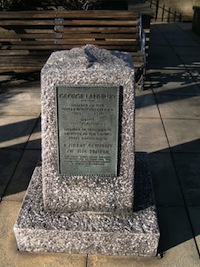
He was passionately loved by the local people he always lived amongst. In turn, he was honoured by the people. The Lansbury Estate, Lansbury Gardens, many streets in London – including in my Dagenham constituency – and in his Suffolk birthplace, as well as Lansbury’s Lido on the Serpentine in Hyde Park, are all named after George.
He was born on 21 February 1859 in Suffolk. His father was a migrant worker, his mother, Anne, of Welsh heritage. His parents’ drinking habits defined George’s lifelong abstinence from alcohol. His family were nonconformist – being strict Sabbatarians – and politically radical. Late in 1868 the Lansbury family moved to Bethnal Green and, later, Whitechapel.
His initial political involvement was with the Liberal Party, which he joined in 1886. He acted as electoral agent for Samuel Montagu in Whitechapel in 1886. But he broke with the Liberals over the eight-hour day and moved to the scientifically socialist SDF and, in support of the famous 1889 dock strike, joined the Gas Workers’ and General Labourers’ Union.
In 1892 he helped to form the Bow and Bromley branch of the SDF and stood for parliament twice under the SDF banner, losing both times. In 1903 he joined the Independent Labour Party and in 1910 became MP for Bow and Bromley. Two years later he clashed with Herbert Asquith in the House of Commons over women’s suffrage and resigned his seat. Campaigning for women’s suffrage, Lansbury was charged with sedition in 1913 and jailed in Pentonville.
In 1912 he helped found the Daily Herald. In 1922, desperately short of funds, he reluctantly handed the paper over to the TUC and the Labour Party.
He established the first pioneering training school for destitute Poplar children in 1905, called Hutton Poplars in the Essex countryside, the model for many subsequent children’s homes.
As Labour Mayor of Poplar, Lansbury led the Poplar Rates Rebellion in 1921, opposing not only the government and the London County Council, but also leaders of his own party. It was not the only time he and Morrison were on opposite sides.
The rebels refused to hand the tax precept to the LCC and instead gave it to the poor. Thirty councillors, including six women, were jailed by the High Court for six weeks. Council meetings were held in Brixton Prison.
They won a rates revision and Lansbury returned to Parliament in 1922, when he regained his old seat of Bromley and Bow.
Between 1925 and 1927 he edited Lansbury’s Labour Weekly, and in 1927 he was elected chairman of the Parliamentary Labour Party. In the second Labour government of 1929, Lansbury was First Commissioner of Works under Ramsay MacDonald.
Fifty-one Labour and ILP MPs survived the 1931 election, including Lansbury. In 1932 Arthur Henderson stood down from the leadership of the party in the country and Lansbury was elected leader.
Through the early 1930s his absolute pacifism brought him into conflict with the party, leading eventually to his resignation in 1935 after a brutal collision with Ernest Bevin at the Brighton conference.
Lansbury went on to chair the No More War Movement and War Resisters’ International, and became president of the Peace Pledge Union.
He died of cancer on 7 May 1940, aged 81, in Manor House Hospital in north London. Six years earlier he had nearly died at the same hospital following a fall.
He had married Bessie in 1880, and they had 12 children. He was the father-in-law of suffragette Minnie Lansbury, Belfast-born actress Moyna MacGill, and historian and novelist Raymond Postgate. Most famously, Lansbury was grandfather of actress Angela Lansbury, producers Bruce and Edgar Lansbury, and animator and puppeteer Oliver Postgate.
It is an extraordinary life and family, but this really only tells half the story. What was his political character? What was it about George Lansbury that makes his rehabilitation so important?
Political character
First, Lansbury was the quintessential Labour moralist, a utopian visionary driven by the search for co-operation and fellowship which pivots on a fundamental belief in the dignity of the human condition. This was not an abstract belief but one lived out through every day of his life once he discovered his true vocation. He embodies the history of both ethical socialism and the ILP in this country. These are traditions quietly being rediscovered within Labour today.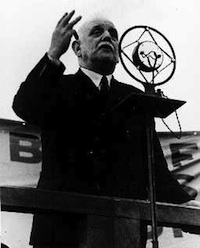
George was a key founder in 1906 of the Christian Socialist League and he became its vice president. He once said that “socialism without religious enthusiasm … will become as selfish and soulless as any other movement that has cursed the world”. His principles could not be compromised, especially his pacifism; they led to two resignations: from his seat in parliament, and from the leadership of his party.
Secondly, following directly from this moral perspective – and like those two other ILP pioneers, Hardie and Ramsay Macdonald – Lansbury was a genuine radical when it came to women’s emancipation and widening the franchise. He was driven by fundamental concerns about human dignity and equal worth, which at different times left him in Brixton and Pentonville prisons and on hunger strike.
In 1907 women were given the vote on local councils but not for parliament. Reform was pursued by the Women’s Social and Political Union and the National Union of Women’s Suffrage Societies, together with the Women’s Labour League within our party.
Lansbury had supported the cause from the 1880s driven by his Christian belief that all human beings were equal in the eyes of God, together with his first hand understanding of women’s experiences in the workhouse.
On the 25 June 1912, Prime Minister Asquith was confronted by questions regarding the torture of women prisoners. The manner of his response, his total lack of human generosity and compassion, ensured an angry attack by Lansbury which saw him suspended from Parliament. That October he resigned his seat and fought the by-election on the issue of women’s rights.
In his manifesto he said: “The women of our country live hard laborious lives. Down here, where I have lived almost all my years, I have grown to understand in some small way what poverty and destitution mean to the women. We men have wanted to use our votes to improve our social condition. I want that our mothers, our wives and our sisters should be allowed to join us in the fight.”
This heroic, pioneering and principled move had one draw back – he lost by 731 votes. Many years later he wrote, “It was not a wise political decision.”
He gained little sympathy from his parliamentary colleagues especially from the leaders, but personal advancement in the House of Commons didn’t interest him. Moreover, as detailed in the brilliant Lansbury biography by John Shepherd, his resignation spoke volumes about his personal frustrations with the party in Westminster and, more generally, about the ability of Parliament itself to really deliver emanicipatory economic and social change, especially in terms of the Poor Law and women’s suffrage.
So, at 53, Lansbury threw away his seat. Irrespective of the defeat, however, he remained at the forefront of the fight for women’s rights. Sylvia Pankhurst hid in Lansbury’s house prior to addressing a meeting at Bow Baths (although they fell out very badly 10 years later when she embraced communism).
He was thrown into Pentonville in 1913 following militant rhetoric regarded as seditious. There were demonstrations and mass singing in support of his hunger strike. The people got him out of there.
He was also the driver behind the most important public document of the last century. As Poor Law Guardian, his hatred of the workhouse was personal, deep and profound.
His Minority Report was the cornerstone of the future welfare state delivered by Attlee. Like Attlee, he refused to accept the notion of the undeserving poor, a belief the Labour Party of today would do well to remember. Attlee’s 1946 legislation, when the end of the Poor Law came to effect, stands as testament to Lansbury and east London’s humanity, captured in the ILP fire and energy of Tommy Williams.
Lansbury’s biographer concluded: “In 1940 he left a vital legacy for any politician, exemplified in his own political life: the conviction that people matter.”
One nation
One final point I would make. Since the party was formed, Labour’s prophets and romantic figures have tended to be Celts – Hardie, Macdonald, Bevan, Kinnock. Although some might claim Lansbury for the Welsh, George is one of the Labour Party’s greatest English figures. It is that English radicalism we must rediscover today, encapsulated in the notion of ‘one nation’ so brilliantly defined recently by Ed Miliband.
If I were to identify the arc in Miliband’s ‘one nation’ Labour agenda I would point to the following:
First, Tony Blair’s quite brilliant 1995 speech that argued for a new national patriotic mission: “A new spirit in the nation based on working together, unity, solidarity, partnership. This is the patriotism of the future – where your child in distress is my child; your parent, ill and in pain, is my parent; your friend, unemployed or homeless, is my friend; your neighbour, my neighbour. That is the true patriotism of a nation.”
Second, Bill Clinton’s notion of a New Covenant in 1992 to describe his political philosophy. It was seen as a “new social compact” between the US and its citizens and contested the very idea of US nationhood.
Third, the great Australian Labour Leader Paul Keating’s model of left ‘nation building’ – beyond simple bricks and mortar, it included national reconciliation and the relocation of Australia away from the Commonwealth towards Asia.
Fourth, I would point to Lansbury’s 1935 book, My England, written in 1934 from the hospital bed many thought he would never leave. In it he describes how “co-operation and mutual aid is the one and only law of life for humanity”. It is a manifesto to “cultivate the joy of living. This is born in the poorest and wealthiest of us and only becomes lost in the mist and gloom of our competitive strife.”
It is a great unifying call about what a country and a people could be; about making hope possible rather than despair convincing. About what the Labour Party is for, about nation building because of a common life that we all share and the desire for all humans to live rewarding, fulfilling lives. It has a deeply contemporary feel as we deal with the effects of economic liberalism and capitalist crisis.
A similar language and sentiment informed the unifying message of Barrack Obama’s victory speech about national renewal built on a common life and shared humanity, irrespective of class, race or gender.
All this is important because Labour only wins when it contests the national story. It has done so successfully on three occasions, in 1945, 1964 and 1997.
Over the next few years this is where Labour has to be. Ed Miliband has started that process of party and national renewal. It is very much in the spirit of George Lansbury and the east London ILP, of redefining what we, as one nation, could be.
This is why rehabilitating Lansbury is a vital part of our one nation politics.
‘Good old George’ was a great Labour leader because he was a great human being; the person was the political. To paraphrase Dylan Thomas, his humanity was both magical and parochial; it was built and it lived in these streets. You can literally see it in the face of the man. Dig out the old photos – his humanity glows, almost as a physical force.
For me, this is where we need to be. And this is why memory is itself a political act, to recapture what we have exiled.
—-
This is an edited version of a speech given to mark the 100th anniversary of George Lansbury’s 1912 resignation as Labour MP for Bromley and Bow, made at the Bromley by Bow Community Centre on 8 November 2012.
Jon Cruddas is MP for Dagenham and Rainham. He is a member of Ed Miliband’s Shadow Cabinet and responsible for the party’s policy review.
New profiles of other leading ILP figures will be published on this website throughout 2013 as part of the ILP’s celebrations of its 120th anniversary. ILPers featured will include Fred Jowett, Phillip Snowden, Fenner Brockway, Isabella Ford, Jennie Lee and Hannah Mitchell, among others.

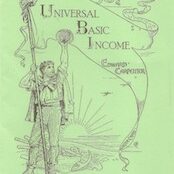
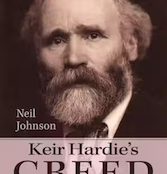
24 August 2015
I grew up with stories of Mr Lansbury, as my Mother and Grandmother called him. He was loved, respected and admired by the people of Poplar for his absolute commitment to his constituents. They were prepared to stand up for him as they knew he did for them.
18 November 2013
[…] also: ‘Good old George’, published here in December 2012, and ‘Attlee, the ILP and the Romantic Tradition’, from 2011, […]
11 November 2013
[…] thousands. The famous ‘Bermondsey uprising’ had begun. Soon Ada’s friend Charlotte Despard, George Lansbury and Sylvia Pankhurst were addressing 15,000 strikers in Southwark […]
20 January 2013
[…] socialist tradition associated with the ILP. He has written two insightful, political reviews of George Lansbury and Clement Attlee, both published on this website. Both these Labour leaders had ILP backgrounds. […]